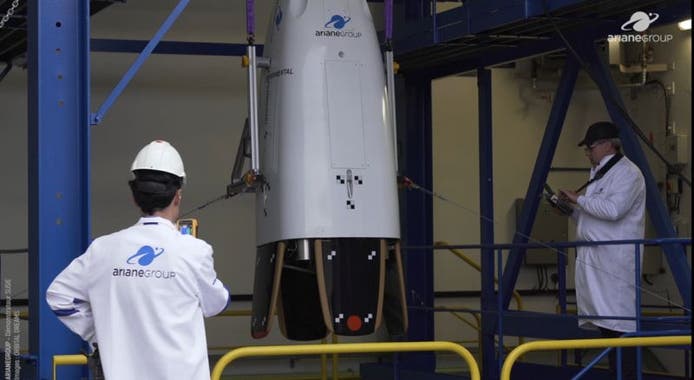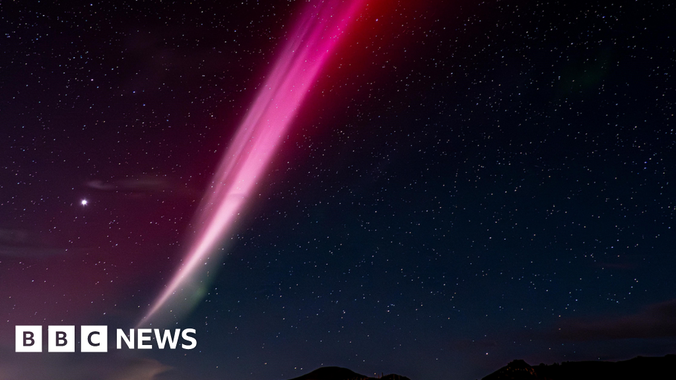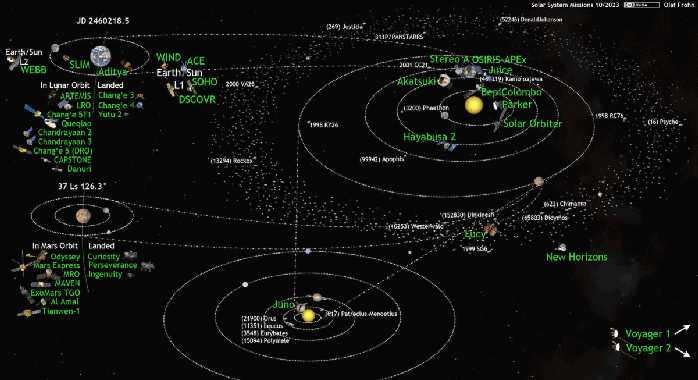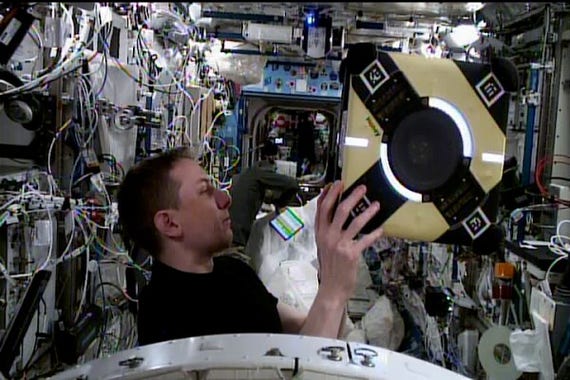China says its space station—seen in new photos—is poised for growth (arstechnica.com)
Tiangong could now outlive the older, larger International Space Station.

Tiangong could now outlive the older, larger International Space Station.

Let’s not send a few thousand people to Mars as a big experiment in survival....


NASA's Lucy Spacecraft took images of asteroid Dinkinesh, discovering that the asteroid has the first-ever contact binary pair orbiting the asteroid.

The rare phenomenon illuminates skies across the north-east of England and parts of Scotland.

Cotton Dayz has got you covered with our collection of comfortable cotton skirts for women. Find the perfect skirt for any occasion, all made with 100% cotton.

ISRO will launch an empty module in preparation for a mission to transport Indian astronauts to space.


The space rock — possibly the exposed core of a planet that didn’t finish forming — could reveal details about the Solar System’s origins.

Today, ESA's Gaia mission releases a goldmine of knowledge about our galaxy and beyond. Among other findings, the star surveyor surpasses its planned potential to reveal half a million new and faint stars in a massive cluster, identify over 380 possible cosmic lenses, and pinpoint the positions of more than 150 000 asteroids...


Point Nemo has become the final resting place for hundreds of spacecraft. What will future archaeologists make of it?

An annular solar eclipse, also known as a “ring of fire” eclipse because of the way the sun and moon line up, will be visible in the US, Central America and South America on 14 October...

Modern solar panels can harness not just ultraviolet light, but also visible and in some cases infrared. But all of these designs are built to harness the sun, which gives off most of its light in the green range and emits plenty of ultraviolet light. But most exoplanets orbit red dwarf stars, which have a peak brightness in the...

The International Space Station is abuzz with the return of one of NASA’s Astrobee smart robots. The yellow Honey Astrobee, one of three free-flying robots,

In 2009 a giant star 25 times more massive than the sun simply vanished. OK, it wasn't quite that simple. It underwent a period of brightening, increasing in luminosity to a million suns, just as if it was ready to explode into a supernova. But then it faded rather than exploding. And when astronomers tried to see the star using...

NASA's OSIRIS-REx sample collection from asteroid Bennu exceeded expectations in material quantity, slowing the curation process. Advanced analysis methods are underway, with a more detailed examination planned for the coming weeks. The initial curation process for NASA’s OSIRIS-REx sample of ast

Southwest Research Institute scientists are using telescopes to observe the asteroid Psyche in the infrared, providing context for NASA's upcoming Psyche mission. Dr. Stephanie Jarmak is using the James Webb Space Telescope (JWST) to look for water signatures on the metallic surface of Psyche, while Dr. Anicia Arredondo is using...

Whether or not UFOs exist, we need to pay attention to how they are influencing our politics and culture

A large, gaseous planet orbits a red giant star that should have destroyed it. It's 530 light-years from Earth.

India's sun-monitoring spacecraft has crossed a landmark point on its journey to escape "the sphere of Earth's influence", its space agency said, days after the disappointment of its moon rover failing to awaken.

The James Webb Space Telescope has taken a stunning image of a perfectly formed Einstein ring, which is also the most distant gravitationally lensed object ever detected.

Study reveals how magma oceans may affect the evolution of hot exoplanets. Lava worlds, massive exoplanets home to sparkling skies and roiling volcanic seas called magma oceans, are distinctly unlike the planets in our solar system. To date, nearly 50% of all rocky exoplanets yet discovered ha

Three comets named Hartley, Encke and Tsuchinshan will pass by the sun in the next few months and be visible from Earth. Here’s how you can spot them

NASA is funding eight new studies aimed at better understanding how the human body reacts to spaceflight. These studies will be done on Earth without the need
